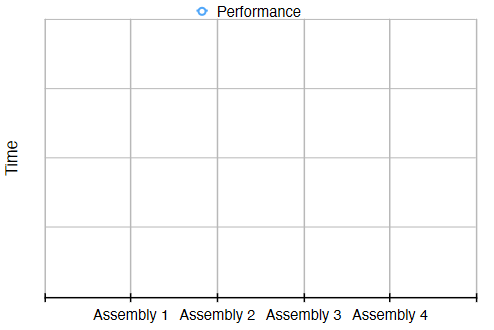7.1: Resource Estimation
Notes
Video 7.1: Project Estimates
Top-Down Methods
Describe the following Top-Down methods:
- Analogous estimating
- Parametric estimating
- Learning Curves
- Function Point Analysis
Guidelines for Bottom-Up Estimation
Bottom-Up Methods
Describe the following Bottom-Up methods:
- Single Point Estimate
- Three-Point Estimate (Simple Average and Te)
- Multiple Estimators: Simple Average
- Multiple Estimators: Te Average
- Multiple Estimators: Delphi Technique
Check Your Knowledge
Questions: Resource Estimation
7. Visit the Compass International web site and answer the following questions:
A. What are three of the areas for which construction cost data is available?
B. Pick one of these areas and view the sample data. What type of rate information is available?
C. How much would it cost to purchase the “2021 Global Industrial / Commercial Repair & Maintenance Construction Yearbook” as a loose leaf binder?
Matching: Time and Resource Estimation
Terms may be used multiple times.
A. Function Point
B. Analogous Estimating
C. Budget Estimate
D. Te
E. Rough Order of Magnitude Estimate
F. Parametric Estimates
G. Learning Curves
H. Definitive Estimate.
I. Delphi technique
J. Scotty Factor
Learning Curve Exercise 1: Master Builders
The following exercise can be done individually or in teams.
This exercise is adapted from Paxton, John (2003), “A Short Simple Learning Curve Classroom Exercise,” Decision Sciences Journal of Innovative Education, 1 (2), 303–307.
Learning Curve Instructions
Obtain a small Lego model that includes directions for assembly. You or someone from your team will assemble this model a total of four times in order to determine the learning curve involved with Lego assembly.
Determine the Learning Curve
1. Assemble the model four times, recording the length of time required for each assembly. Completely disassemble the model completely between each run
2. Record times as minutes and tenths of a minute. Divide the number of seconds by 60 to convert to decimal. For example, 2 minutes 20 seconds is 2.33 minutes
3. Be careful not to lose any of the parts. They’re small and will get away from you unless you’re careful
4. Graph the performance using the graph below
5. Calculate your average learning curve percentage using the calculation instructions below
Calculations
Record assembly times, and graph using the accompanying chart. (Provide your own time scale for the Y axis):

Calculate Average Learning Curve
- Divide Assembly Time 2 by Assembly Time 1
- Divide Assembly Time 4 by Assembly Time 2
- Add Answer 1 to Answer 2 and Divide by Two to calculate the average decrease in time due to learning
Using this data
Assume that the average learning curve you just discovered holds true for future projects. You are asked to assemble 4 “Life on Mars” vehicle Lego kits. During the testing of the kit, it took 16 hours to assemble the kit.
Estimate much time will it take to assemble the 2th and 4th kits.
Note on Completing this exercise in teams
If you are completing this exercise in a team, I recommend that the following roles be used. You can add additional disassemblers and time keepers as needed.
| Role | Responsibilities |
| Master Builder | You are the only one on your team who can join one piece with another. Your job is to assemble the model as efficiently as possible, but you must complete it as designed. |
| Assistant Builder | You can help the Master Builder in any way as long as you do not join or disassemble pieces. |
| Quality Control | You are responsible for insuring that your team’s model has no errors. Random inspections will be made by President Business (instructor). |
| Disassembler | You are responsible for disassembly of the model between assembly rounds. |
| Time Keeper | You are responsible for timing the assembly times of the Master Builder and recording calculations. |

